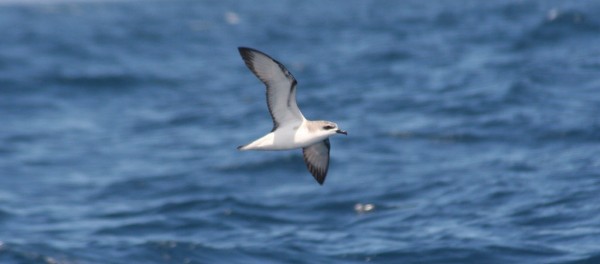By Ana Verayo, | November 12, 2016

Seabirds especially petrels are more prone to eat marine plastic debris than other species. (Flickr)
Scientists have finally figured out why seabirds like to eat plastic from floating marine debris. Plastic pollution can apparently emit a special scent that the birds detect think is food.
The consumption of plastic is hazardous to the health of birds. Birds, especially tube-nosed seabirds like albatrosses and petrels, are most affected by marine plastic pollution.
Like Us on Facebook
In this new study, scientists from the University of California, Davis placed beads inside a mesh bag created from plastic debris and let it float on the ocean in Monterey Bay and Bodega Bay in the coast of California.
After three weeks the UC Davis Robert Mondavi Institute for Wine and Food Science scientists analyzed the exposed beads and discovered how they emitted DMS (dimethyl sulfide) which is a sulfur compound that is similar to a biochemical signature of algae. DMS is emitted from algae when eaten by krill or other seabird food sources.
When this scent is released, it serves as a trigger for tube-nosed seabirds to forage for food.
Apart from this, the team also identified that these types of seabirds are more likely to consume plastic, at six times more likely to eat plastic debris in the ocean compared to other bird species.
According to Gabrielle Nevitt from UC Davis, this study has determined that petrels and some shearwaters are more likely to suffer from plastic ingestion. Since these species build their nests in underground burrows, they are often overlooked. However, based on their foraging patterns, this study has identified that these birds are consuming a massive amount of plastic, making them vulnerable to marine debris.
The team plans to develop new strategies that will provide solutions to plastic pollution in the world's oceans to prevent harm not only to birds but also to fish, sea turtles, and other marine life.
This new study was published in the journal Science Advances.
-
Use of Coronavirus Pandemic Drones Raises Privacy Concerns: Drones Spread Fear, Local Officials Say

-
Coronavirus Hampers The Delivery Of Lockheed Martin F-35 Stealth Fighters For 2020

-
Instagram Speeds Up Plans to Add Account Memorialization Feature Due to COVID-19 Deaths

-
NASA: Perseverance Plans to Bring 'Mars Rock' to Earth in 2031

-
600 Dead And 3,000 In The Hospital as Iranians Believed Drinking High-Concentrations of Alcohol Can Cure The Coronavirus

-
600 Dead And 3,000 In The Hospital as Iranians Believed Drinking High-Concentrations of Alcohol Can Cure The Coronavirus

-
COVID-19: Doctors, Nurses Use Virtual Reality to Learn New Skills in Treating Coronavirus Patients







